Course Objective:
Students will be able to describe the structure and functions of print media organization. They understand the economics of media organisation. They will get to know the set up and practices of media organizations, industries, and they understand the vital role that media play in the production of news, information, and entertainment in a democratic society
Course Outcome:
At the end of the course, learners will be able to:
CO1 : acquire detailed understanding of media organizations and its types.
CO2 : bring out the differences between media as business and media as a social institution.
CO3 : have an in-depth knowledge of how media organizations are managed.
CO4 : gain clear idea of how print media works, its various functions and departments.
CO5 : have a deeper understanding of the relationship between media and its market, the production and revenue aspects, along with the risks involved with the economics of media.
Unit I Media Concepts
Key Concepts Relating to Mass media -Types of Media -Functions of Media Organization -Nature and Structure of Media Organizations – Sources of Information for Media – Media Organization and Design – Types of Media Organisation: Government Media, PrivateMedia & NGO’s Media – Media as Business and Social Institution -Media Entrepreneurship – Greiner’s Development Model of a company.
Unit II Organizational Structure
Organizational Structures of Various Media Organization: TV, Radio, Newspapers, Magazines, Social Media, Mobile Telephony and Advertising -Nature and Structure of Media Organizations – Organizational Behaviour: Group Behaviour – Innovation and Creativity – Culture of Organization – Production Houses -Employment Opportunities in Indian Media Industry – Industrial Revolution and Media Boom.
Unit III MEDIA SPONSORSHIP
Relationship between Industry and Media – Interdependence of media – Sponsorship Patterns:Vertical and horizontal sponsorships on TV, Newspaper space selling – Influence of Sponsors – Advertising agencies and their functions – Ethical Considerations in Advertising Creativity – Advertising Standards Council of India (ASCI) -. Newspaper economics: Circulation & Advertising as source of revenue – Evaluation of media using theory of Uses and Gratifications on Media, Nielson’s rating, TRP, ABC, content assessment and basic audience research techniques.
Unit IV ECONOMICS, PROJECT PLANNING & PRODUCTION TEAM 12
Economics of Media-Relationship between Supplier and BuyerRevenue Models – Market Factors – Project Management in Media-Production Project Cycle (PPC), Management themes in production Process – Project Planning – Production Strategies – Risk and Impact Assessment, Pre-production, Production Team, Project Specification, Project work plan, Sources of Funds, Budgeting Project Responsibility.
Unit V STRATEGIES, STRENGTHS AND LEGAL ARRANGEMENTS 12
Programming Strategies – Audience Rating-Analyzing Programming and Audience Trends -Marketing Programmes and Selling -Space and time. Different kinds of contracts and legal Arrangements and Project Management. Theories of Management and Critical Media theories with Emphasis on Communication and media practices -Study of Management Practices in India and the West.
Total: 60 Hrs
 CHAT WITH A STUDENT
CHAT WITH A STUDENT